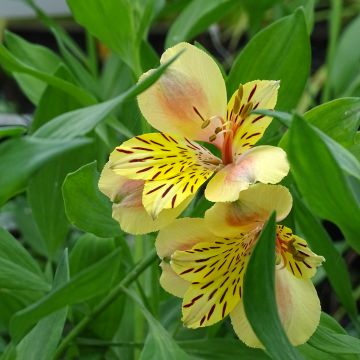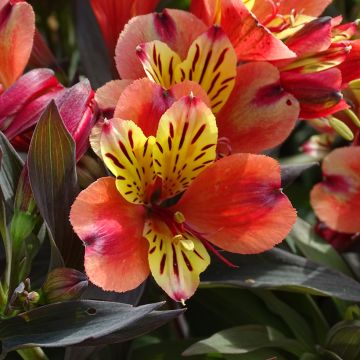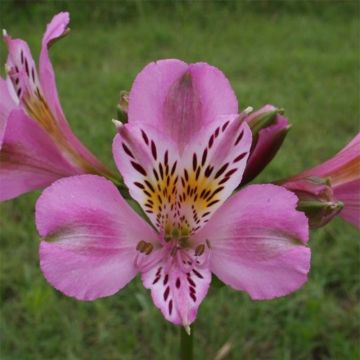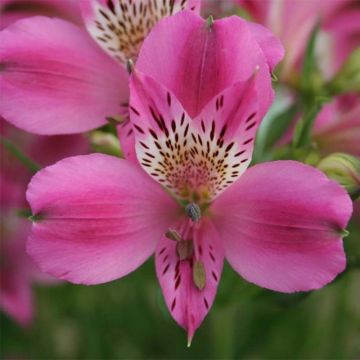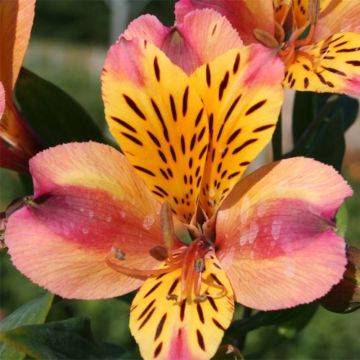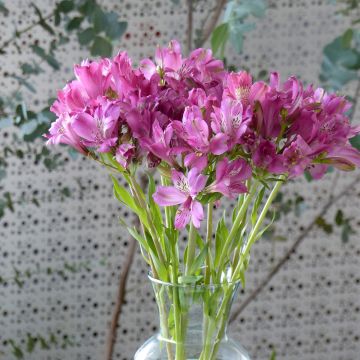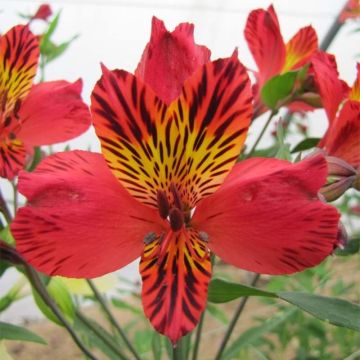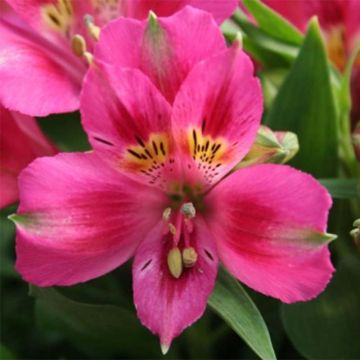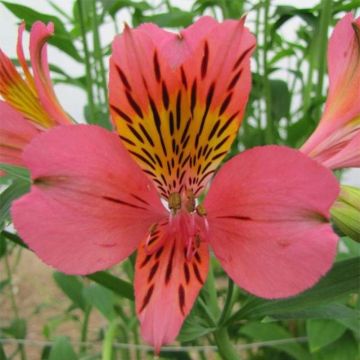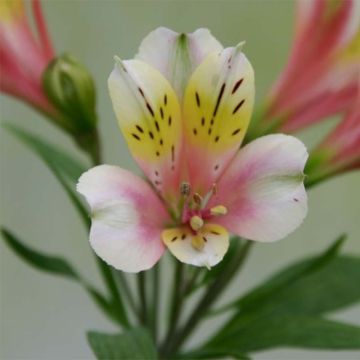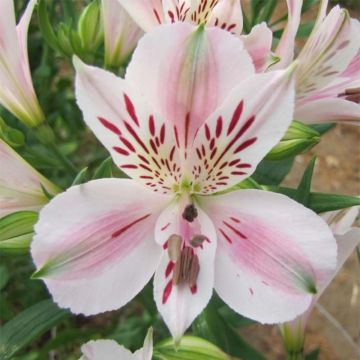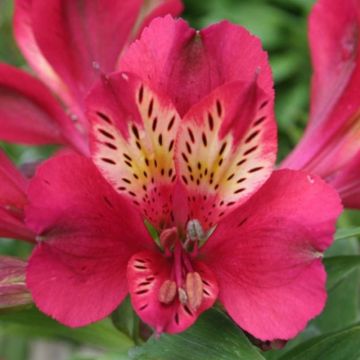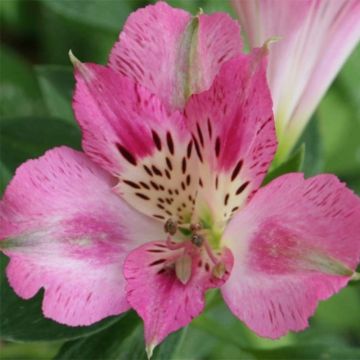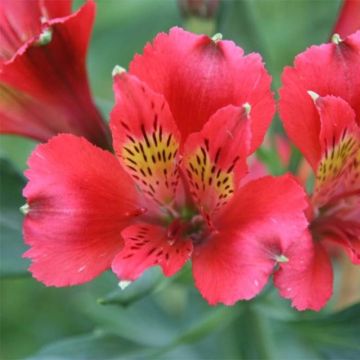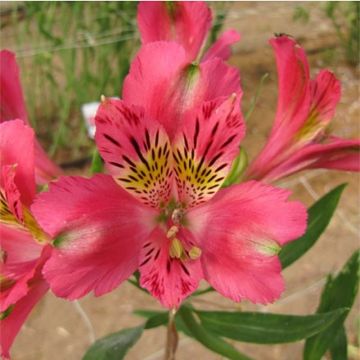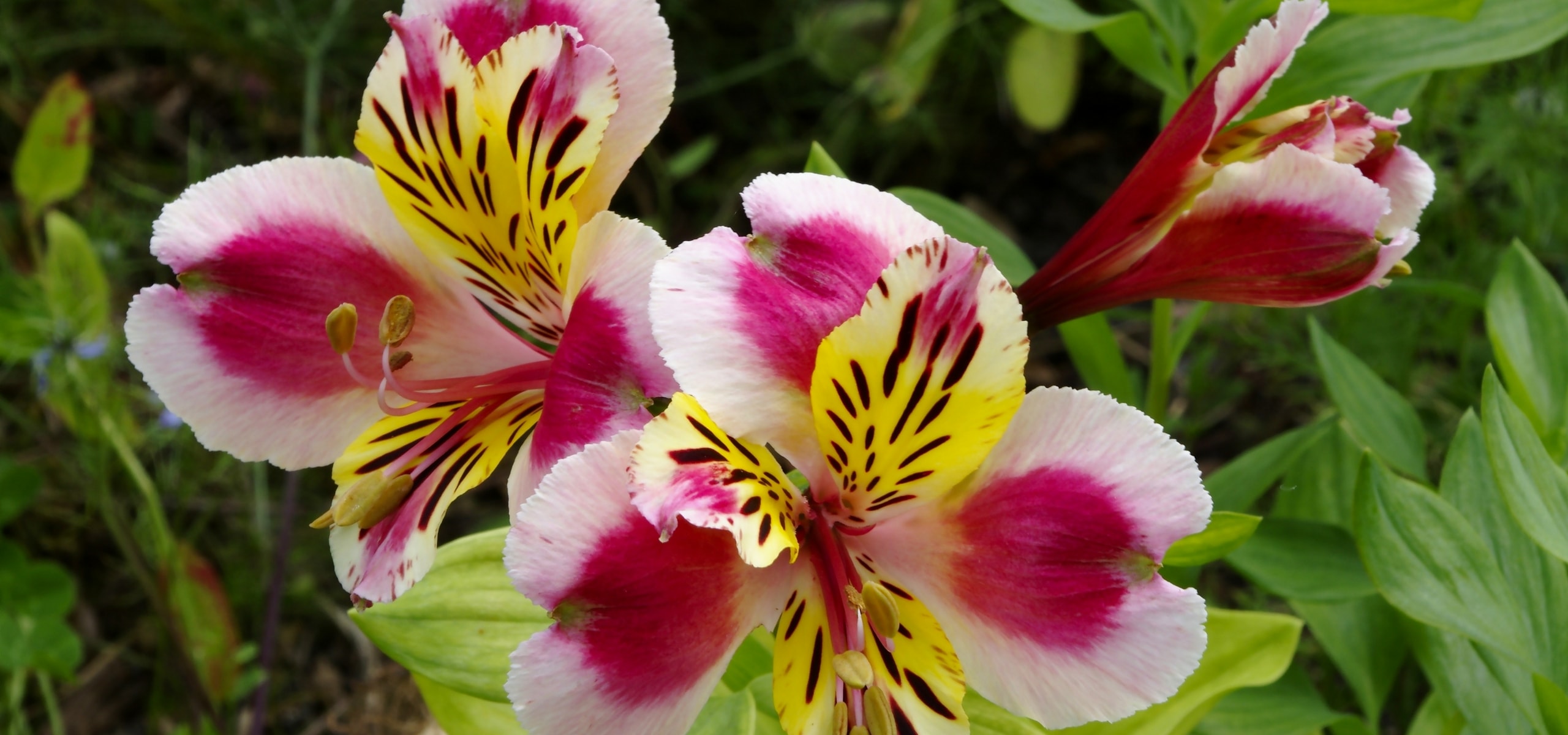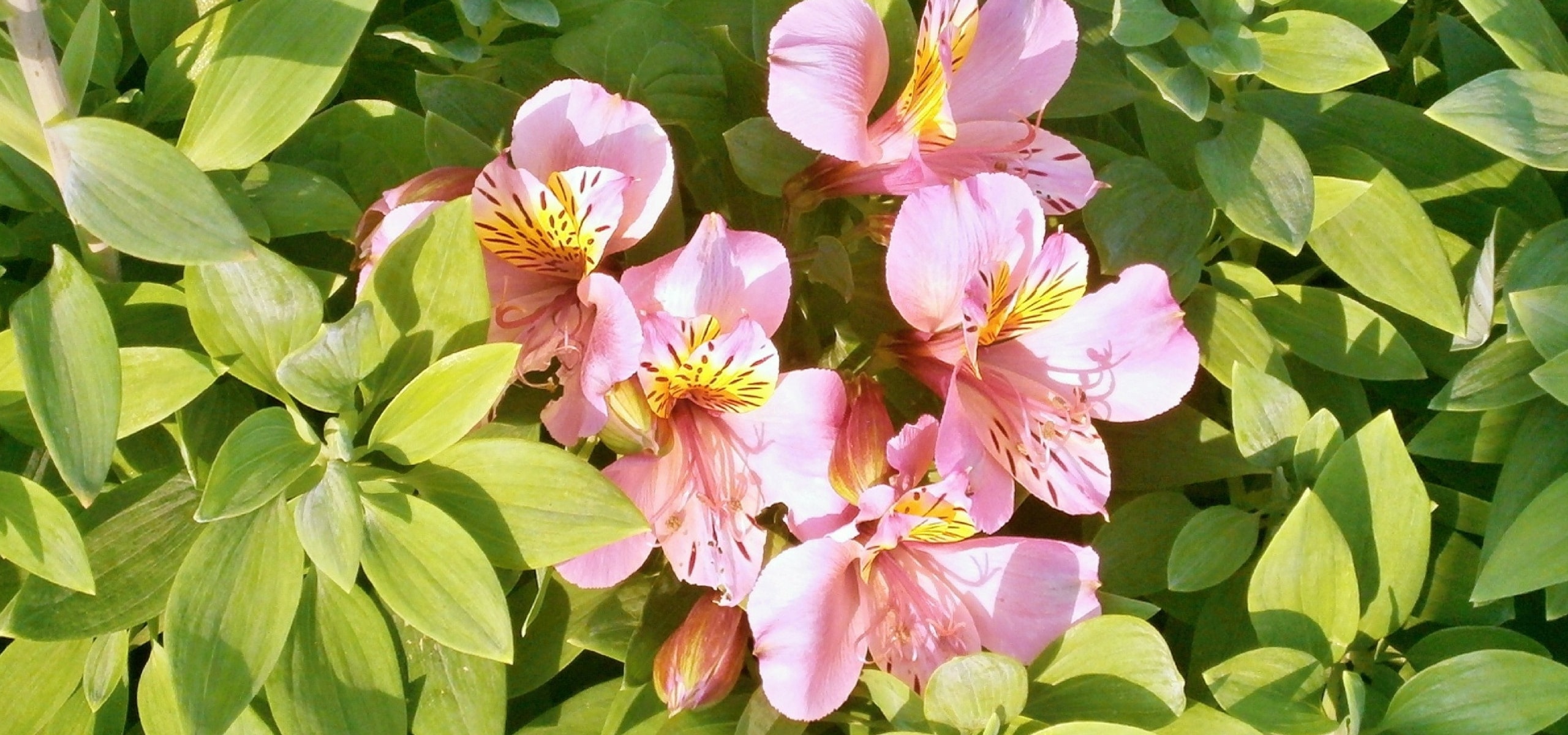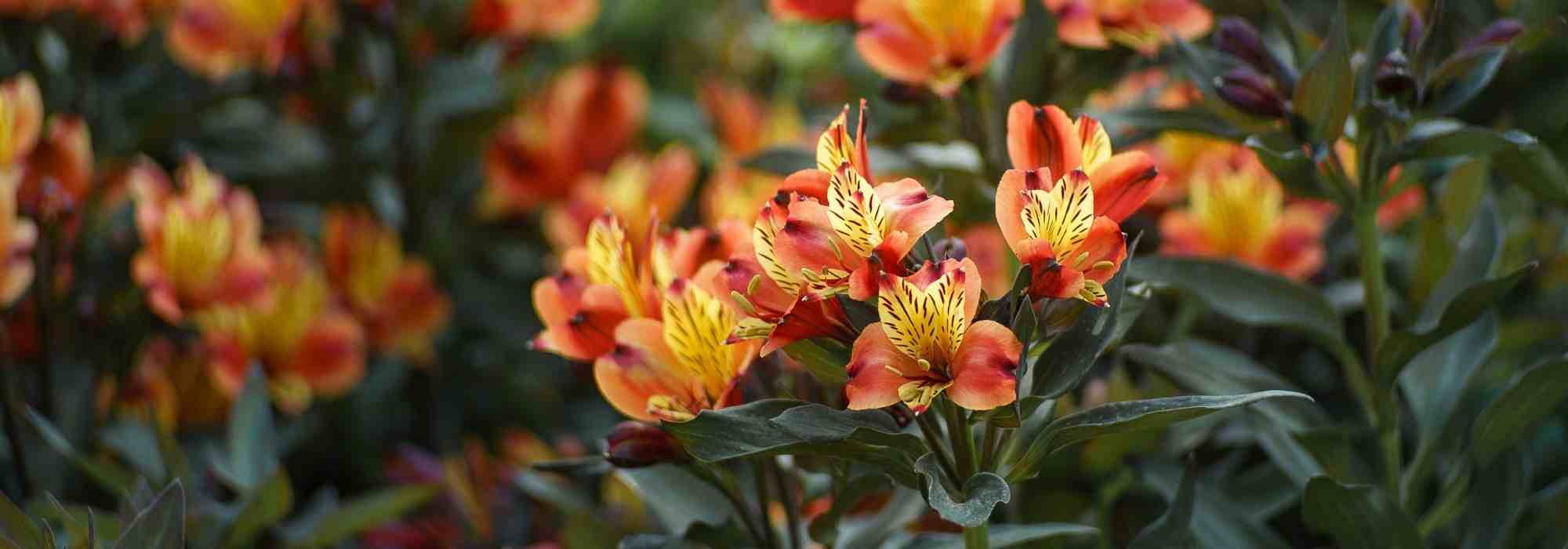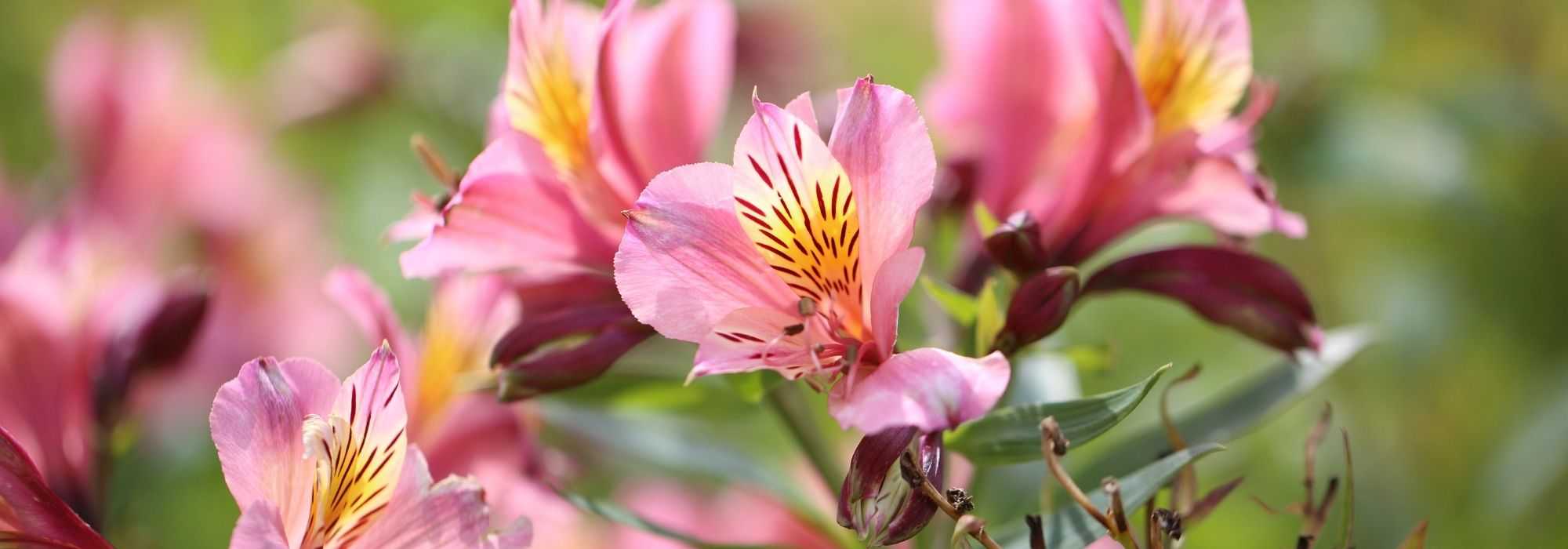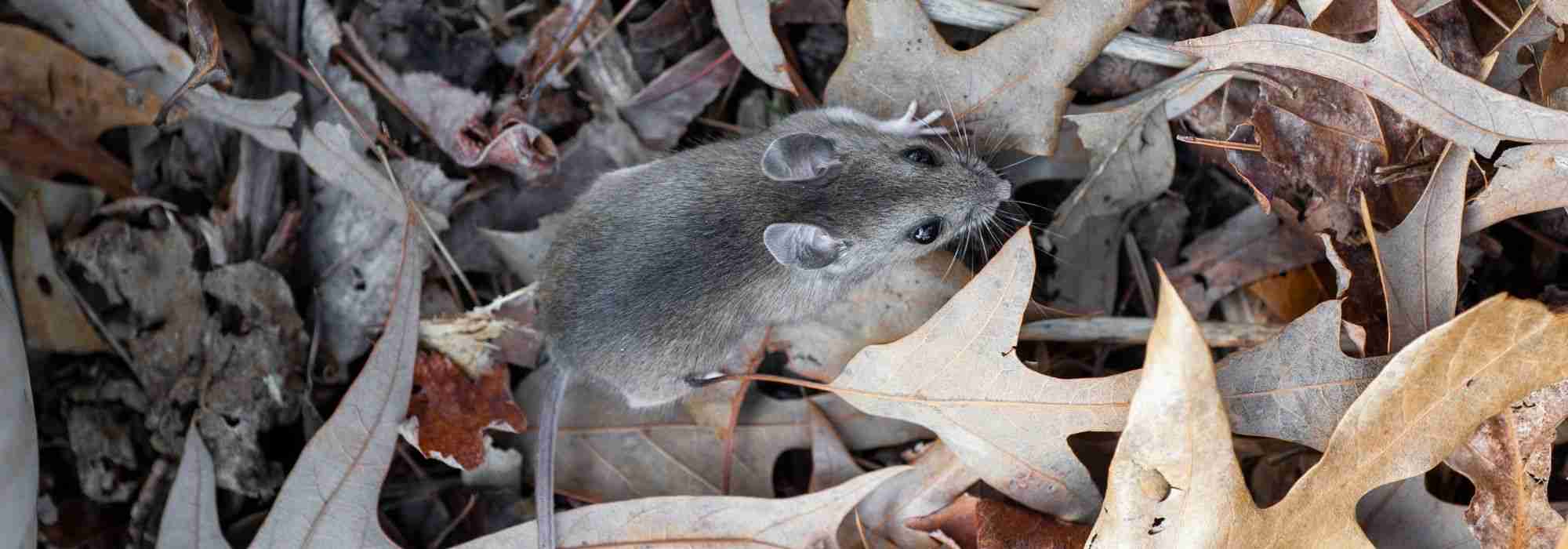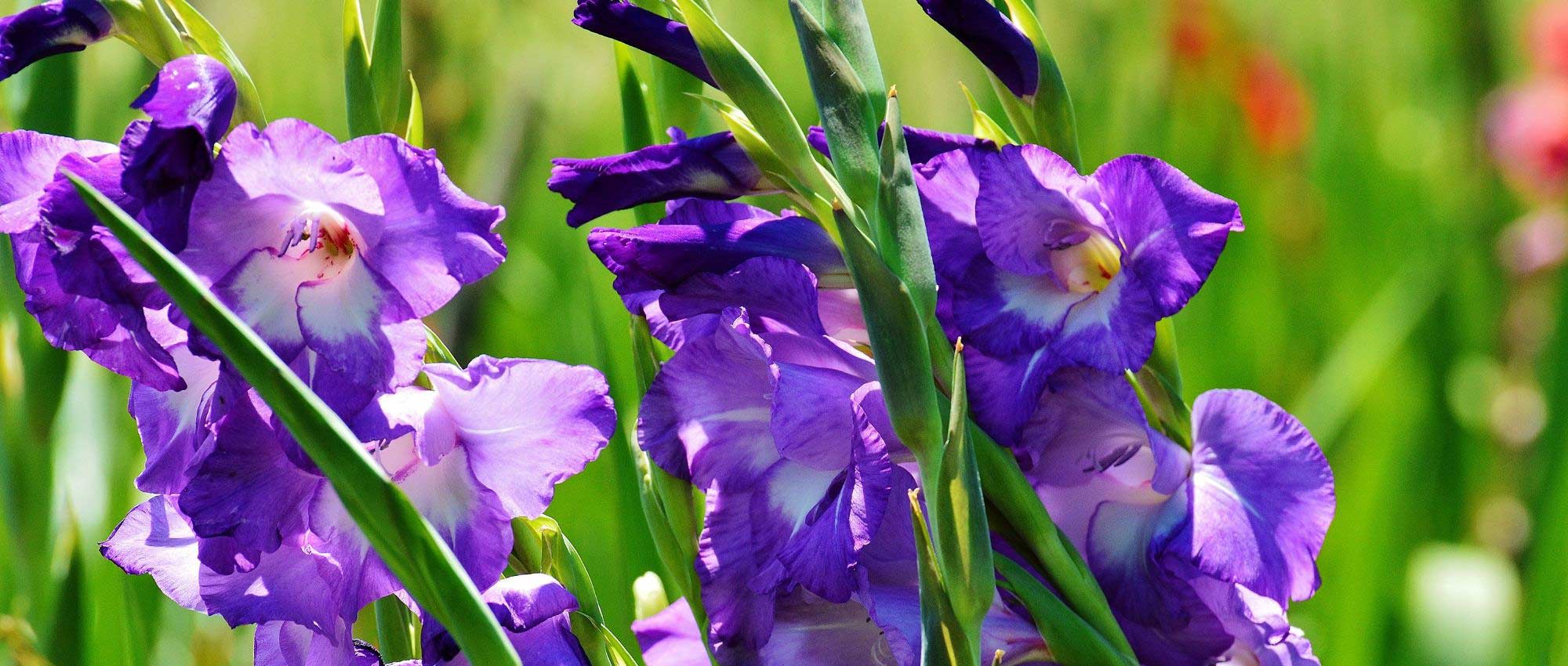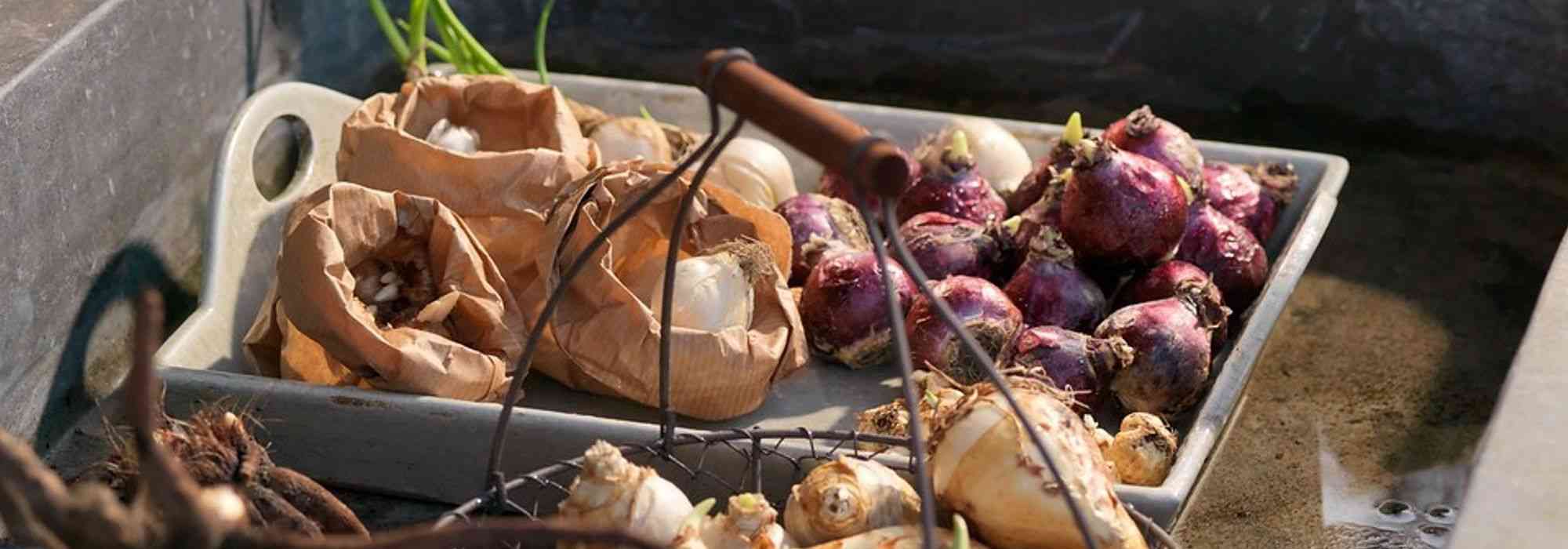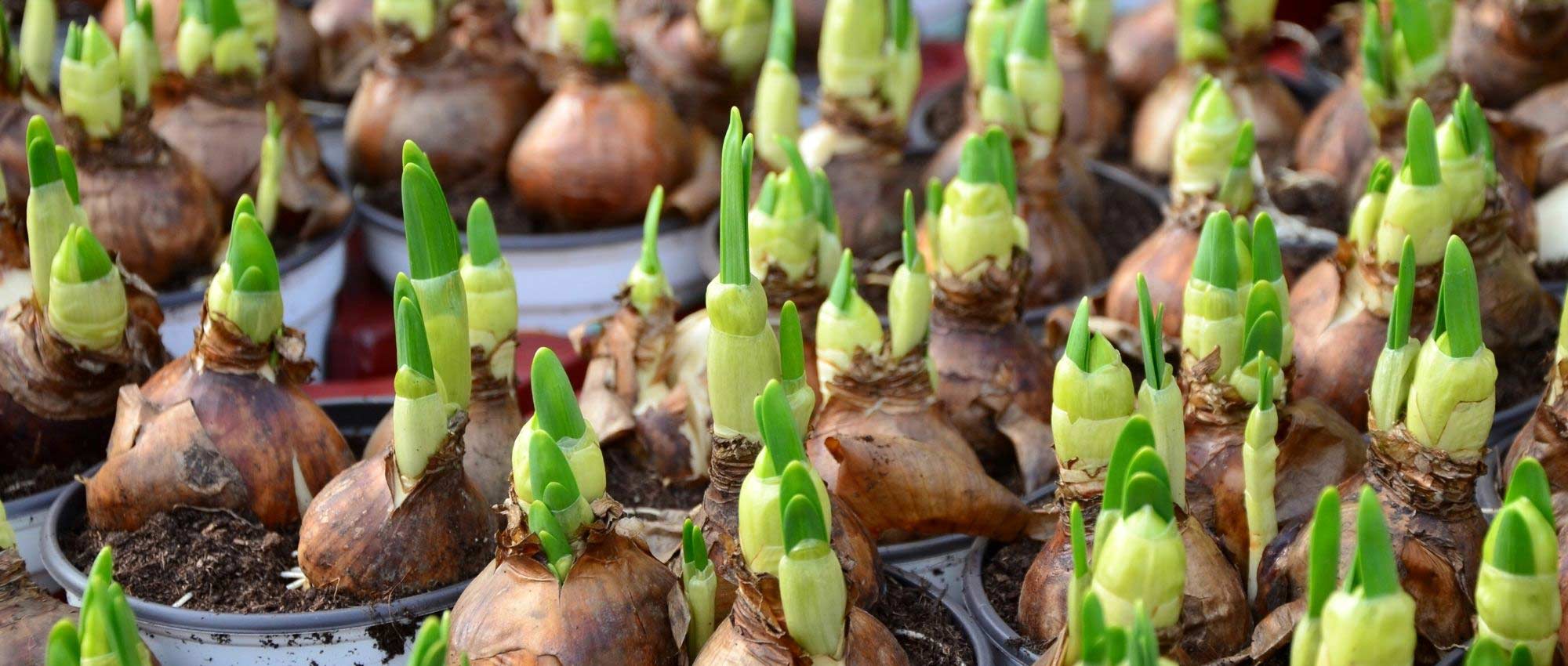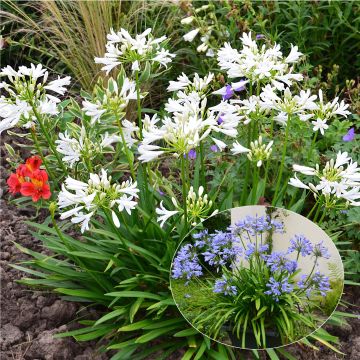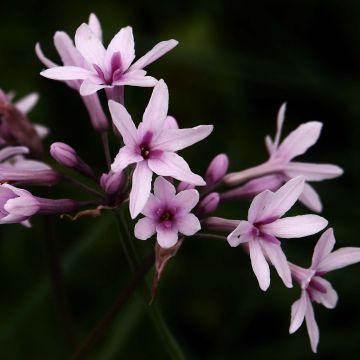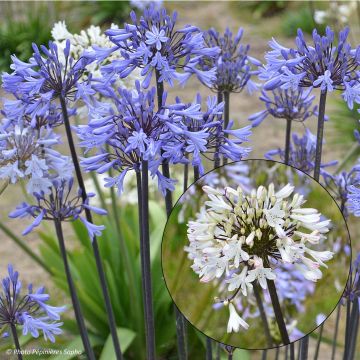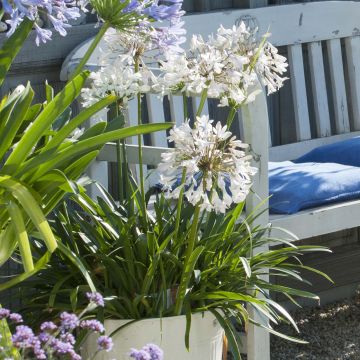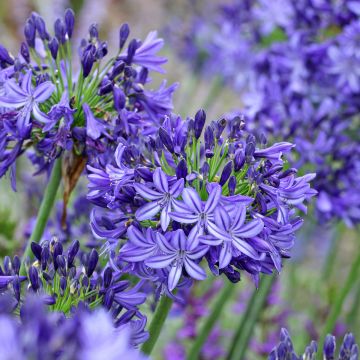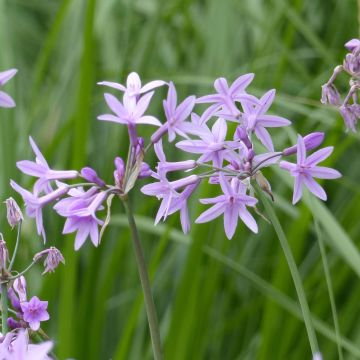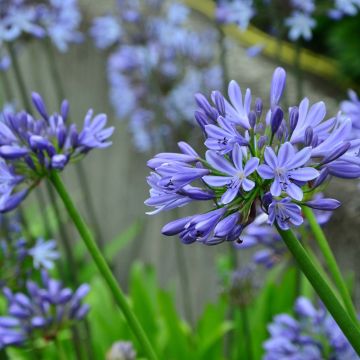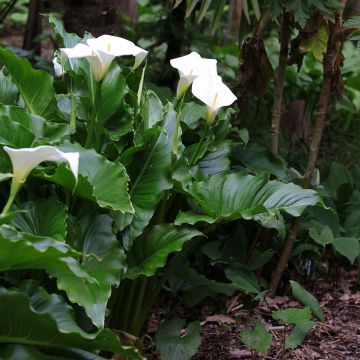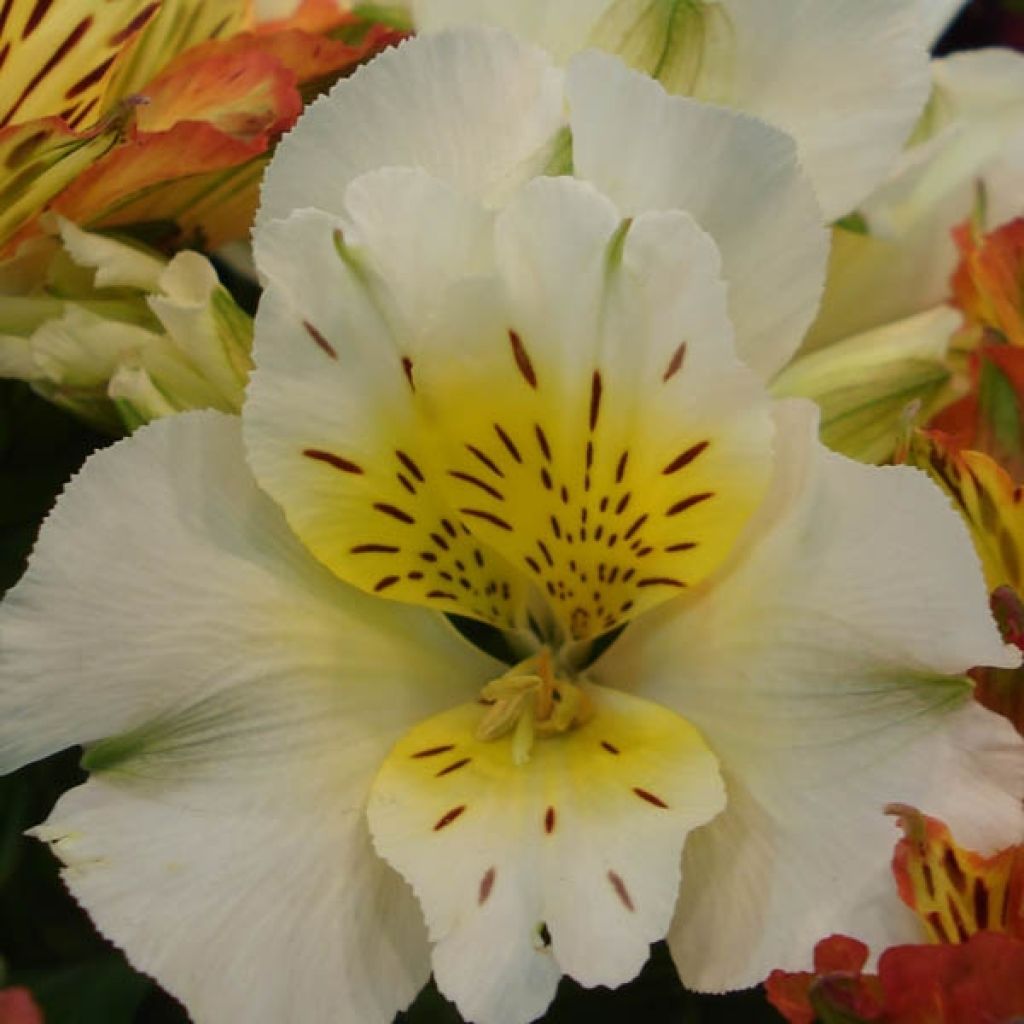

Alstroemère Inticancha Sunlight pot de 9cm
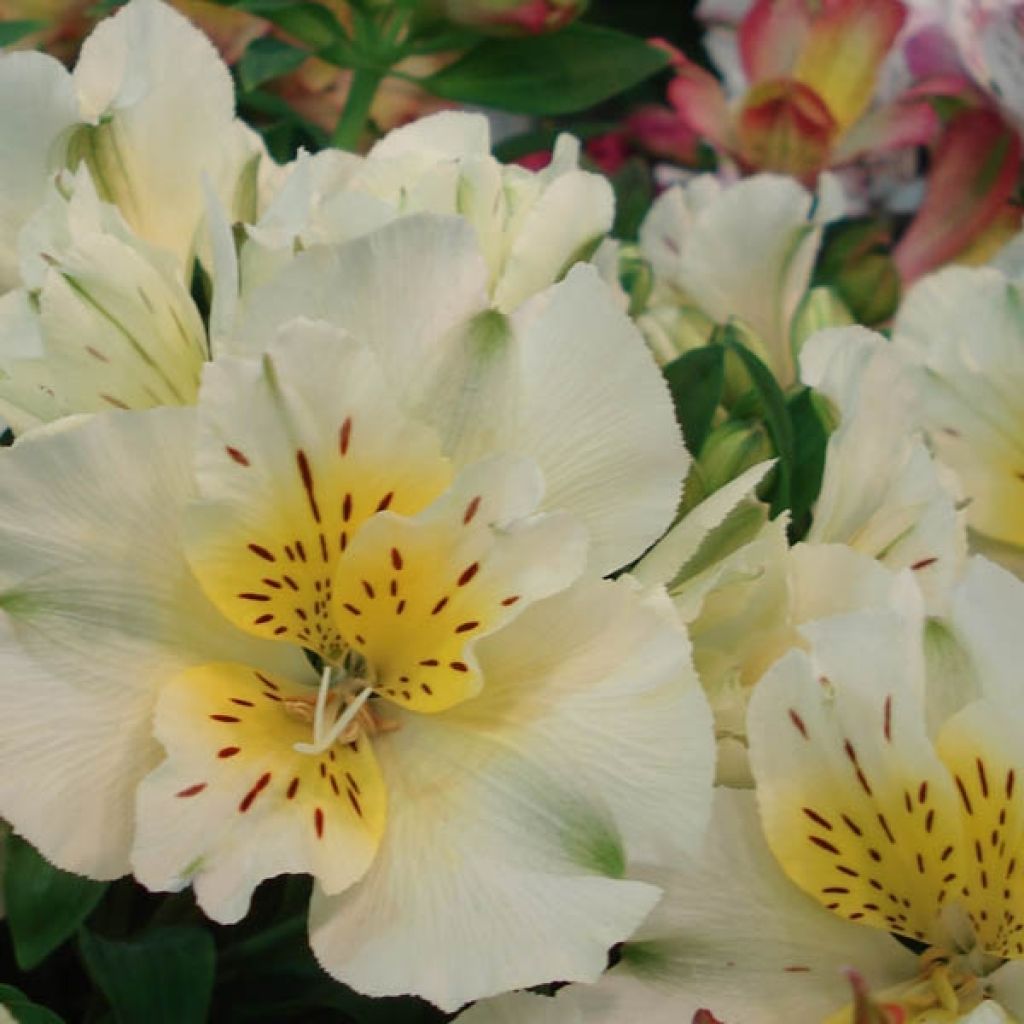

Alstroemère Inticancha Sunlight pot de 9cm
Alstroemeria Inticancha Cabana - Peruvian Lily
Alstroemeria Inticancha® Cabana (Tescaban)
Peruvian Lily, Lily of the Incas
Beautiful flowers blooming from June to October are serious.
Dardenne, 30/04/2020
Special offer!
Receive a €20 voucher for any order over €90 (excluding delivery costs, credit notes, and plastic-free options)!
1- Add your favorite plants to your cart.
2- Once you have reached €90, confirm your order (you can even choose the delivery date!).
3- As soon as your order is shipped, you will receive an email containing your voucher code, valid for 3 months (90 days).
Your voucher is unique and can only be used once, for any order with a minimum value of €20, excluding delivery costs.
Can be combined with other current offers, non-divisible and non-refundable.
Why not try an alternative variety in stock?
View all →This plant carries a 6 months recovery warranty
More information
We guarantee the quality of our plants for a full growing cycle, and will replace at our expense any plant that fails to recover under normal climatic and planting conditions.

Does this plant fit my garden?
Set up your Plantfit profile →
Description
The Astroemeria Inticancha® 'Cabana' is a new variety of Peruvian Lily with a compact habit and remarkably abundant flowering. With its low and weather-resistant stems, this variety maintains a neat appearance throughout the season that will make an impression in flower pots. Particularly robust, the plant continuously produces two-toned yellow lily flowers from June to the first frost. They have a very pale yellow colour with a beautiful throat delicately streaked with purple. This not very hardy perennial plant is easy to grow as an annual and requires very little maintenance. It thrives in partial shade or in the sun, in light, not too dry soil.
The Alstroemeria Inticancha® 'Cabana' is the result of hybridization between several tuberous species native to South America, particularly the Chilean Andes. These high-altitude plants belonging to the amaryllis family are more or less hardy, appreciate cool, well-drained soil in a lightly wooded and fresh area. They take a long time to establish and can either disappear or become invasive! Quirky but fantastic plants, very sensitive to growing conditions, they are "indestructible" once you find the right spot for them.
'Cabana', like almost all plants in the Inticancha® series, is particularly compact and easy to grow in good potting soil. The plant quickly forms bushy clumps with leafy stems reaching 30 to 40 cm (12 to 16in) in height when flowering, with a spread of 30 cm (12in). Flowering occurs continuously from June to October-November. The open flowers are gathered in terminal umbels. They have 3 small central petals, pale yellow with young base streaked with purple-brown, surrounded by 3 larger petals, almost white with a yellow-washed central zone. The flower's center has pale yellow stamens. Each plant can produce at least 30 flowers. The foliage is arranged on the upper part of the stems. The leaves of this variety are shiny green. The foliage and stems disappear in winter, leaving only the trailing stump with fleshy roots underground, which can withstand frosts down to -5/-8°C. The latter is sensitive to the shock of transplantation, especially in older plants.
The Alstroemeria Inticancha® 'Cabana' is a superb variety for decorating flower pots and for cut flowers. On the terrace or balcony, it creates an exotic bouquet that competes in brilliance with balcony geraniums and petunias. In borders, this plant pairs well, for example, with other varieties from the same Inticancha series ('Moon', 'White', 'Sunset') as well as complementary grasses: Stipa tenuifolia or barbata, small Miscanthus, Eragrostis, or Muhlenbergia capillaris will accompany its colours with their foliage and magnificent late-season blooms. You can also plant Ceratostigma plumbaginoides at its base, with intense blue flowers and red foliage in October, or Ajuga reptans 'Multicolour' or 'Burgundy Glow'. A marvel!
Note: Please be aware that our young plug plants are professional products reserved for experienced gardeners: upon receipt, transplant and store them under cover (veranda, greenhouse, cold frame) at a temperature above 14°C for a few weeks before being planted outdoors once the risk of frost has definitively passed.
Alstroemeria Inticancha Cabana - Peruvian Lily in pictures
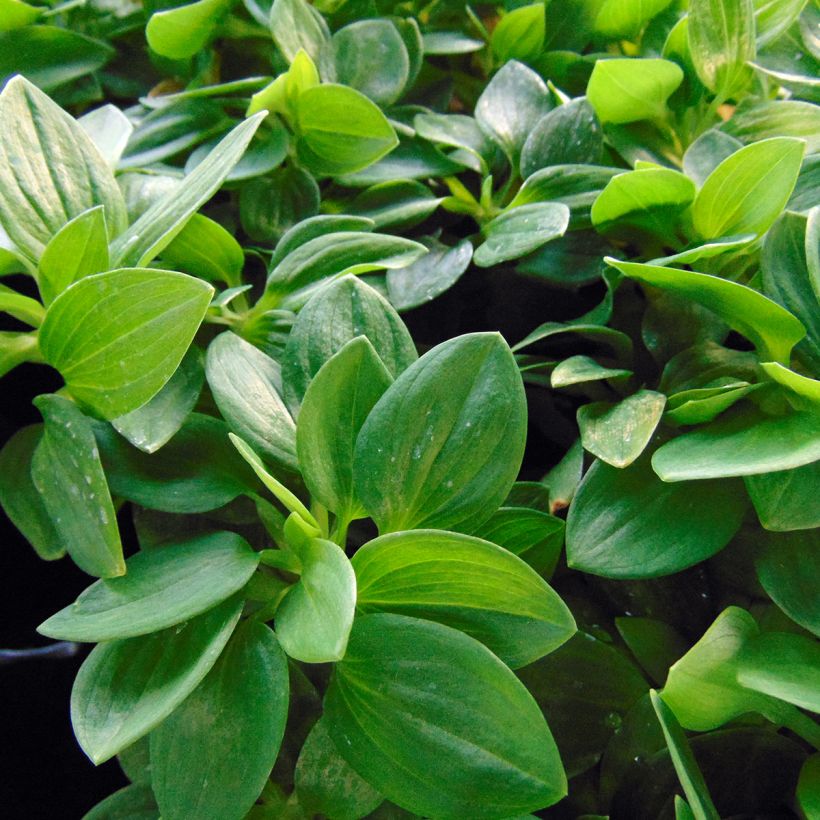

Plant habit
Flowering
Foliage
Botanical data
Alstroemeria
Inticancha® Cabana (Tescaban)
Alstroemeriaceae
Peruvian Lily, Lily of the Incas
Central Europe
Other Alstroemerias
View all →Planting and care
The Inticancha® Alstroemerias can be planted in spring, choosing a location in the morning sun or partial shade, in a light, well-drained, well-worked soil, with a tendency towards sandy or loamy and slightly acidic to neutral pH, and not overly fertile. While they appreciate coolness to support their flowering, they adapt quite well to dry soils in summer. These plants are somewhat hardy, down to -5 or -8°C, if the soil remains dry in winter. The stump can be protected with a thick mulch of leaves or fern fronds in autumn. Slugs love young shoots; make sure to protect them. Growing them in pots allows for sheltering the plants from frost by storing them in a bright, well-ventilated, and minimally heated area.
Planting period
Intended location
Care
Planting & care advice
-
, onOrder confirmed
Reply from on Promesse de fleurs
Similar products
Haven't found what you were looking for?
Hardiness is the lowest winter temperature a plant can endure without suffering serious damage or even dying. However, hardiness is affected by location (a sheltered area, such as a patio), protection (winter cover) and soil type (hardiness is improved by well-drained soil).

Photo Sharing Terms & Conditions
In order to encourage gardeners to interact and share their experiences, Promesse de fleurs offers various media enabling content to be uploaded onto its Site - in particular via the ‘Photo sharing’ module.
The User agrees to refrain from:
- Posting any content that is illegal, prejudicial, insulting, racist, inciteful to hatred, revisionist, contrary to public decency, that infringes on privacy or on the privacy rights of third parties, in particular the publicity rights of persons and goods, intellectual property rights, or the right to privacy.
- Submitting content on behalf of a third party;
- Impersonate the identity of a third party and/or publish any personal information about a third party;
In general, the User undertakes to refrain from any unethical behaviour.
All Content (in particular text, comments, files, images, photos, videos, creative works, etc.), which may be subject to property or intellectual property rights, image or other private rights, shall remain the property of the User, subject to the limited rights granted by the terms of the licence granted by Promesse de fleurs as stated below. Users are at liberty to publish or not to publish such Content on the Site, notably via the ‘Photo Sharing’ facility, and accept that this Content shall be made public and freely accessible, notably on the Internet.
Users further acknowledge, undertake to have ,and guarantee that they hold all necessary rights and permissions to publish such material on the Site, in particular with regard to the legislation in force pertaining to any privacy, property, intellectual property, image, or contractual rights, or rights of any other nature. By publishing such Content on the Site, Users acknowledge accepting full liability as publishers of the Content within the meaning of the law, and grant Promesse de fleurs, free of charge, an inclusive, worldwide licence for the said Content for the entire duration of its publication, including all reproduction, representation, up/downloading, displaying, performing, transmission, and storage rights.
Users also grant permission for their name to be linked to the Content and accept that this link may not always be made available.
By engaging in posting material, Users consent to their Content becoming automatically accessible on the Internet, in particular on other sites and/or blogs and/or web pages of the Promesse de fleurs site, including in particular social pages and the Promesse de fleurs catalogue.
Users may secure the removal of entrusted content free of charge by issuing a simple request via our contact form.
The flowering period indicated on our website applies to countries and regions located in USDA zone 8 (France, the United Kingdom, Ireland, the Netherlands, etc.)
It will vary according to where you live:
- In zones 9 to 10 (Italy, Spain, Greece, etc.), flowering will occur about 2 to 4 weeks earlier.
- In zones 6 to 7 (Germany, Poland, Slovenia, and lower mountainous regions), flowering will be delayed by 2 to 3 weeks.
- In zone 5 (Central Europe, Scandinavia), blooming will be delayed by 3 to 5 weeks.
In temperate climates, pruning of spring-flowering shrubs (forsythia, spireas, etc.) should be done just after flowering.
Pruning of summer-flowering shrubs (Indian Lilac, Perovskia, etc.) can be done in winter or spring.
In cold regions as well as with frost-sensitive plants, avoid pruning too early when severe frosts may still occur.
The planting period indicated on our website applies to countries and regions located in USDA zone 8 (France, United Kingdom, Ireland, Netherlands).
It will vary according to where you live:
- In Mediterranean zones (Marseille, Madrid, Milan, etc.), autumn and winter are the best planting periods.
- In continental zones (Strasbourg, Munich, Vienna, etc.), delay planting by 2 to 3 weeks in spring and bring it forward by 2 to 4 weeks in autumn.
- In mountainous regions (the Alps, Pyrenees, Carpathians, etc.), it is best to plant in late spring (May-June) or late summer (August-September).
The harvesting period indicated on our website applies to countries and regions in USDA zone 8 (France, England, Ireland, the Netherlands).
In colder areas (Scandinavia, Poland, Austria...) fruit and vegetable harvests are likely to be delayed by 3-4 weeks.
In warmer areas (Italy, Spain, Greece, etc.), harvesting will probably take place earlier, depending on weather conditions.
The sowing periods indicated on our website apply to countries and regions within USDA Zone 8 (France, UK, Ireland, Netherlands).
In colder areas (Scandinavia, Poland, Austria...), delay any outdoor sowing by 3-4 weeks, or sow under glass.
In warmer climes (Italy, Spain, Greece, etc.), bring outdoor sowing forward by a few weeks.






























